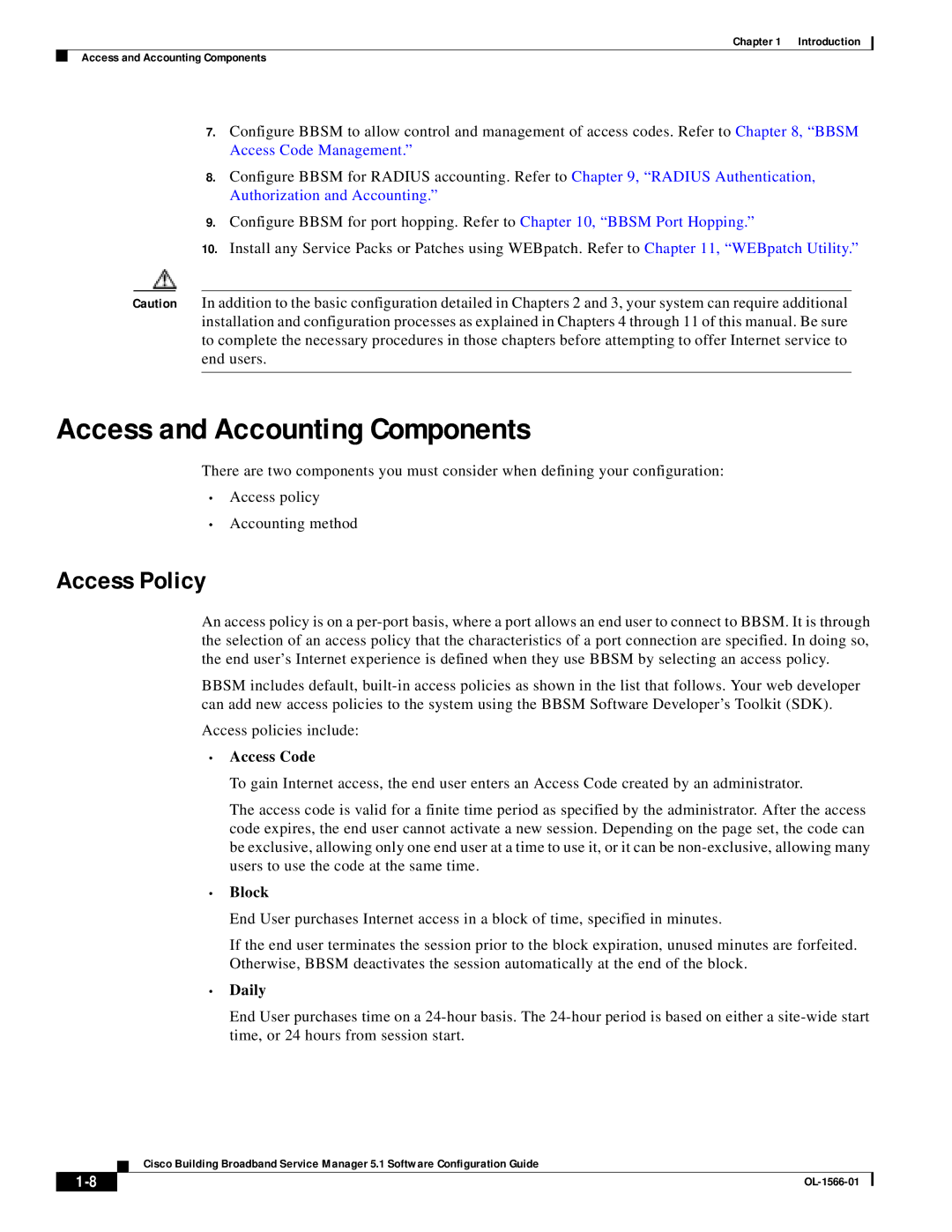
Chapter 1 Introduction
Access and Accounting Components
7.Configure BBSM to allow control and management of access codes. Refer to Chapter 8, “BBSM Access Code Management.”
8.Configure BBSM for RADIUS accounting. Refer to Chapter 9, “RADIUS Authentication, Authorization and Accounting.”
9.Configure BBSM for port hopping. Refer to Chapter 10, “BBSM Port Hopping.”
10.Install any Service Packs or Patches using WEBpatch. Refer to Chapter 11, “WEBpatch Utility.”
Caution In addition to the basic configuration detailed in Chapters 2 and 3, your system can require additional installation and configuration processes as explained in Chapters 4 through 11 of this manual. Be sure to complete the necessary procedures in those chapters before attempting to offer Internet service to end users.
Access and Accounting Components
There are two components you must consider when defining your configuration:
•Access policy
•Accounting method
Access Policy
An access policy is on a
BBSM includes default,
Access policies include:
•Access Code
To gain Internet access, the end user enters an Access Code created by an administrator.
The access code is valid for a finite time period as specified by the administrator. After the access code expires, the end user cannot activate a new session. Depending on the page set, the code can be exclusive, allowing only one end user at a time to use it, or it can be
•Block
End User purchases Internet access in a block of time, specified in minutes.
If the end user terminates the session prior to the block expiration, unused minutes are forfeited. Otherwise, BBSM deactivates the session automatically at the end of the block.
•Daily
End User purchases time on a
Cisco Building Broadband Service Manager 5.1 Software Configuration Guide
| ||
|
